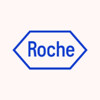
Long Term Follow-up Study for Patients Enrolled on the BP-004 Clinical Study
Acute Lymphoblastic LeukemiaLeukemia15 moreThis is a long-term follow up study evaluating the safety of BPX-501 T cells (rivogenlecleucel) and infused in pediatric patients previously enrolled on the BP-004 study.

Triferic IRIDA (Iron-Refractory Iron-Deficiency Anemia) Protocol
Iron-Refractory Iron-Deficiency AnemiaThe main purpose is to determine whether Triferic, administered orally with Shohl's solution, is safe and effective for the treatment of iron-refractory iron-deficiency anemia (IRIDA).

SACRED A Prospective Research Study to Reduce Stroke in Children With Sickle Cell Anemia
Sickle Cell AnemiaProspective screening and treatment study for children with Sickle Cell Anemia and increased stroke risk living in the Dominican Republic.

Safety, Pharmacokinetics, and Efficacy of Subcutaneous Isatuximab in Adults With Warm Autoimmune...
Warm Autoimmune Hemolytic Anemia (wAIHA)Primary Objectives: Part A: To evaluate the safety and tolerability of subcutaneous injections of isatuximab in adults with wAIHA Part B: To evaluate the efficacy of the selected dose in adults with wAIHA Secondary Objectives: Part A (Cohorts 2 and 3 only) To evaluate the efficacy of isatuximab in adults with wAIHA To evaluate the durability of response to isatuximab and time to response To evaluate the impact of isatuximab treatment on fatigue Part B To evaluate the safety and tolerability of isatuximab in adults with wAIHA To evaluate the durability of response to isatuximab and time to response To evaluate the impact of isatuximab treatment on fatigue Parts A (all Cohorts) and B To evaluate the effect of isatuximab on markers of hemolysis To characterize the pharmacokinetic profile of isatuximab in adults with wAIHA To evaluate the immunogenicity of isatuximab

The Use of Trifluoperazine in Transfusion Dependent DBA
Diamond Blackfan AnemiaPure Red Cell AplasiaDiamond Blackfan anemia (DBA) is a rare inherited pure red cell aplasia. The two main non-stem cell transplant therapeutic options are corticosteroids and red blood cell (RBC) transfusions. About 80% of DBA patients initially respond to corticosteroids, however, half of the patients cannot continue due to side effects or loss of response. These patients are then typically dependent on RBC transfusions throughout life. Each of these treatments is fraught with many side effects and significant morbidity and mortality are potential consequences of hematopoietic stem cell transplantation (SCT). The majority of individuals with DBA have mutations in genes encoding structural proteins of the small or large ribosomal subunit leading to deficiency of the particular ribosomal protein (RP). Using the RP deficient zebrafish embryo model, high throughput drug screens have demonstrated a strong hematologic response to several calmodulin inhibitors. One of these chemicals is trifluoperazine (TFP). TFP treatment of a mouse model of DBA also increased the red blood cell count and the hemoglobin (Hb) levels in the mice. TFP is a FDA-approved typical antipsychotic agent that has been available since 1958 with a well-known safety profile. In the United States, TFP is approved for the short-term treatment of generalized non-psychotic anxiety; treatment or prevention of nausea and vomiting of various causes; and, management of psychotic disorders. This study aims to determine the safety/tolerability of TFP in adult subjects with DBA. TFP's expected dose-limiting toxicity is primarily neurologic (extrapyramidal) when used long-term at typical anti-psychotic doses (range 10-50 mg daily). Non-neurologic adverse effects in subjects with DBA have not been investigated. We will perform a dose escalation study to define the safety and tolerability of lower doses of this agent in subjects with DBA. To mitigate the potential risks of administering TFP to this new population, we will (1) start dosing at dose levels well below those prescribed for psychosis, (2) dose escalate to a maximum of 10 mg daily (the lowest dose typically prescribed for psychosis), and (3) perform weekly safety monitoring. Given the positive signal in DBA animal models and the 60-year clinical experience with higher doses of TFP, this drug warrants a trial in humans to assess tolerability in DBA.

Prospective Study on Feto-maternal outcoMe In aNemIc womEn
AnemiaPregnancy Anemia6 moreBackground Blood transfusions in pregnancy are usually urgent, unpredictable, and occur in otherwise healthy women. There is evidence of increasing rates of maternal red blood cell (RBC) transfusion around childbirth both in Europe and in US. Indeed, they are recorded in approximately 0.4-1.6% of all deliveries. Although obstetric patients use a small proportion of the blood supply overall (3-4%), however over the last years there has been a significant increase (about 30%) in the use of blood and blood products throughout pregnancy. Most available data relate to the peri-partum period, defined as those occurring from 48 hours before delivery onwards. Anemia in pregnancy is associated with increased maternal mortality and fetal intrauterine growth restriction (IUGR). The risk of these adverse effects is proportional to the severity of anemia; for instance, preterm birth and low birth weight rates are particularly high among women with a hemoglobin below 7 g/dL. The presence of anemia in at-term pregnant women is a rather frequent and unrecognized risk factor for peri-partum hemorrhage (PPH) transfusion. In a retrospective investigation, we have calculated that almost 20% of at-term pregnant women show iron deficiency anemia. It has been suggested that reduction of RBC transfusion in the context of PPH may decrease maternal mortality and, at the same time, reduce costs. Patient's Blood Management (PBM) is a well-known strategy based on 1) identification of anemia; 2) reduction of blood loss and 3) reduction of RBC transfusion. In several medical specialties, recommendations based on available evidence highlighted the concept that a restrictive RBC administration is safe and efficacious. Despite the fact that the WHO has recommended PBM early 2010, the majority of hospitals are in need of guidelines to apply PBM in daily practice. Rationale Anemia is a frequent and often unrecognized hallmark of at-term pregnancies. Systematic collection of data on transfusion practice during pregnancy and post-partum period are scarce. The application of PBM in obstetrics is expected to improve pregnancy outcome and optimize resources. Objectives Objectives of the present study are To estimate: frequency of anemia in pregnancy and feto-maternal complications, distribution of haemorrhage aetiologies and transfusion indications. To evaluate associations of these outcomes with gestational age, and transfusion dose.

TARGTEPO Treatment for Anemia in End Stage Renal Disease (ESRD) Patients Undergoing Peritoneal Dialysis...
Anemia of End Stage Renal DiseaseThe objectives of this study are to assess safety and to evaluate the biologic activity of TARGTEPO treatment in Peritoneal Dialysis patients

A Study to Assess the Hematopoyetic Response of Anemic Patients With Hematologic Malignancies Treated...
AnemiaThis study will examine the efficacy, safety and effect on hemoglobin levels, of once weekly subcutaneous injections of epoetin beta (30,000 IU) in anemic participants with non-Hodgkin's lymphoma, chronic lymphocytic leukemia or multiple myeloma. The anticipated study duration is 4 months, and the target sample size is 30 individuals.

Biosimilar Erythropoietin in Anaemia Treatment (Correction Phase Study)
Renal AnaemiaThis study is aimed to comprehensively establish the biosimilarity/bioquivalence in EPIAO® and EPREX® in terms of 52-week comparisons in efficacy,safety and immunogenicity.The targeted population is anaemia patients with chronic renal disease who are naive to epoetin treatment and not yet on haemodialysis.

Safety and Efficacy of Exjade in the Treatment of Transfusion-dependent Iron Overload in Aplastic...
Aplastic AnemiaEvaluated Exjade efficacy and safety in patients with aplastic anemia and transfusion-dependent iron overload, undergoing treatment programs of immunosuppressive treatment (Cyclosporine A) , in comparison with a group of patients undergoing treatment programs of immunosuppressive treatment (Cyclosporine A) without chelation therapy.
